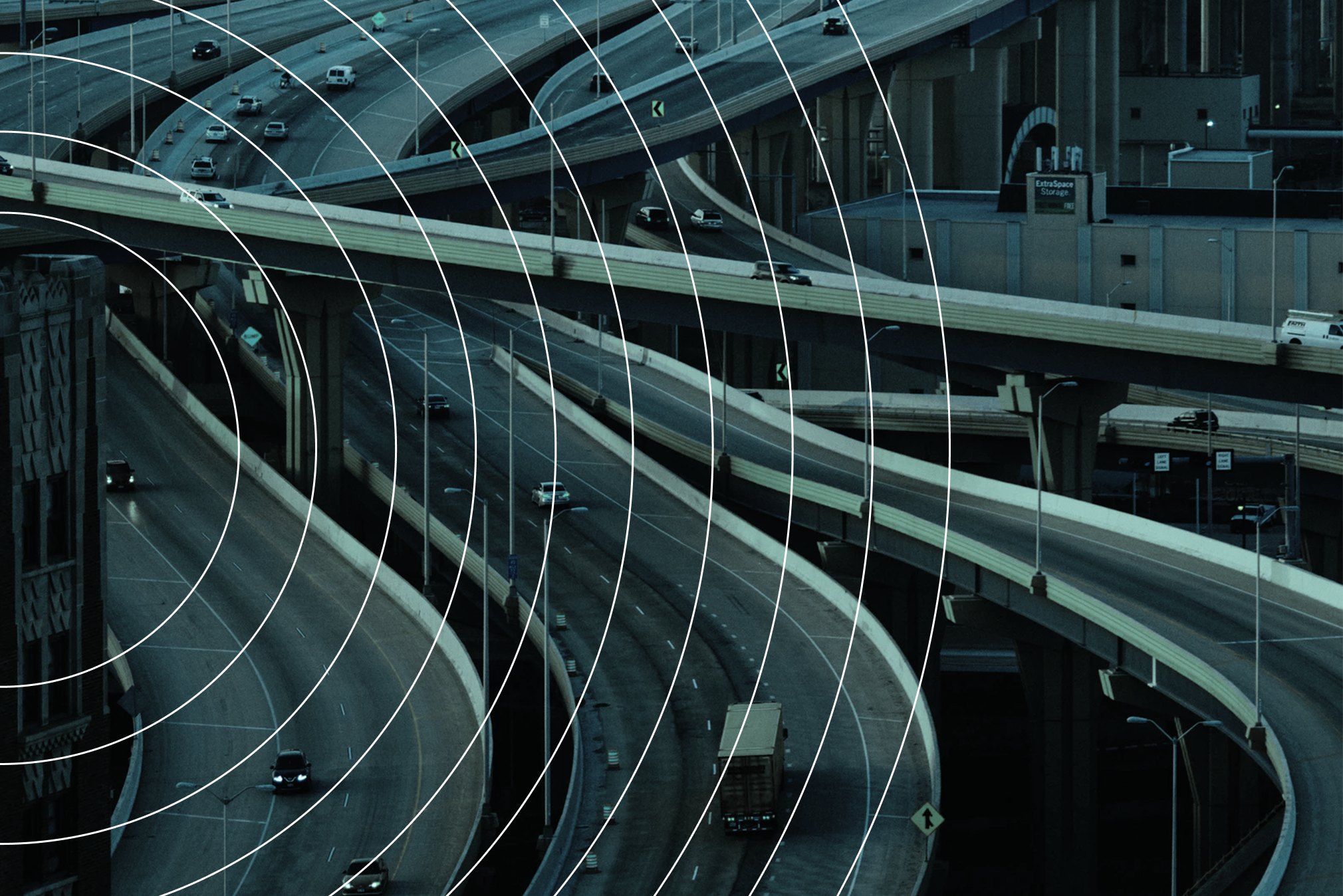One year later: Revisiting 10 fundamental shifts accelerated by COVID-19
Almost exactly a year ago — April 9, 2020 — we were deep in the COVID-19 crisis, and most of the United States was shut down. It seemed as though the world had shifted overnight. But when we took a step back, we realized the rapid changes in work, business, education, and society had actually been happening in slow motion for some time.
When we initially published our list of 10 fundamental shifts accelerated by COVID-19, we didn’t know that 2020 would bring a racial justice reckoning. We didn’t foresee a swift economic recovery. We didn’t imagine that staying at home would actually increase carbon emissions. We couldn’t anticipate the magnitude of our collective loss — or the speed at which vaccines would be developed and deployed.
One year later, we’re revisiting what we published in 2020 and offering an updated look at what might come next.
1. A fragile global economy.
What we said a year ago.
While some quickly point to the coronavirus as the cause of our current economic situation, danger signs have been flashing for some time. In the 20th century, booming population growth led to booming economic growth. The rise of the nuclear family boosted production and sales of consumer packaged goods, appliances, vehicles, and energy. But in the 21st century, our population growth has slowed, raising questions about how to plan for sustainability and prosperity when you can’t depend on growth. Within a few short months, COVID-19 has brought an end to the longest expansion in U.S. history, exposing flaws in the underpinnings of our global economy.
What we’re watching now.
The U.S. economic recovery is shaped like a K, with widening disparity. Despite record unemployment and the closure of more than 100,000 small businesses, 2020 was a boom year for some. Those with stock market investments, home equity, and steady employment have saved money and are waiting to spend it. Demand for residential real estate is much higher than supply in most of the country, and housing is becoming less affordable. Unexpected shortages — from flour and yeast to bicycles and semiconductor chips — have emphasized our global interdependencies and exposed the fragility of international supply chains. We’re watching to see if supply chains can surge and flex to meet rolling shortages based on evolving demand — without overinvesting in production and growth without realizing that demand will eventually plateau. (Case in point: We have too much toilet paper now.) As vaccination rates increase and travel restrictions ease, spending may shift from goods back to experiences.
2. The rise of the city-state.
What we said a year ago.
America is unique in that there is a delicate balance between the political rights and powers established by federal law and those of individual states. Unlike other modern democracies, cities and states also have different expectations of the federal government’s responsibility. In recent years, the federal-state relationship has been on the rocks, with states challenging or refusing to comply with federal law, and the federal government retaliating against individual cities and states. These tensions are on full display during the current pandemic as barbs are exchanged between governors and the federal government. In the absence of a national, coordinated response, individual states and regions appear to be harnessing power, forming alliances, and even checking each other for the common good.
What we’re watching now.
States have flexed their power and influence over the past year, shoring up regional alliances and agreements. (Even now, states like New York have different travel guidelines for people visiting from non-contiguous states.) County-level COVID case reporting and state-level vaccine rollouts have only reinforced regional culture and identity. Looking ahead, reopenings will put regional economic development strategies to the test; some experts believe the country’s biggest metro areas will bounce back quickly, while others are betting on mid-size cities with strong local alliances.
3. Our approach to an aging society.
What we said a year ago.
Medical advancements have increased global life expectancy — vaccinations help people avoid disease entirely, and drug development allows people to live with chronic diseases like diabetes and even cancer. Globally, for the first time in history, there are more people over 64 than children under 5. However, we have made very few public health investments in protecting this large, vulnerable population. Life spans have been projected to decrease if we did not put protections in place; the arrival of the new coronavirus, which disproportionately takes the lives of the elderly, has only accelerated this reality.
What we’re watching now.
The past year has proved that we can’t just focus on extending life; we also need to protect and improve life. The Biden administration’s new infrastructure plan calls for a huge investment in caregiving jobs, including home-based or community-based care for the elderly. Near term, we will need to better understand the pandemic’s impact on nursing homes and ensure better oversight of long-term care facilities. Longer term, we will need to consider what it takes to live a healthy, secure, fulfilling life at age 80 or 90 — and increasingly, 100. For some families, that may mean migration: Many adult children returned to their parents’ homes during the pandemic, and some grandparents have moved to be closer to their children and grandchildren; we may see an increase in multigenerational homes and growing interest in housing solutions like accessory dwelling units. Multigenerational living has increased during the pandemic, with many families citing eldercare and childcare as factors.
4. Healthcare in America.
What we said a year ago.
The slow march to affordable healthcare has sped up as some insurers agree to waive COVID-19 fees. Meanwhile, as individual states face shortages of PPE, ventilators, and essential medicines, hospitals are calling on the federal government to boost the national stockpile. Given the economic toll, it’s increasingly difficult to imagine the U.S. emerging from this crisis without some type of national healthcare plan and required infrastructure. That will likely include advances in health data interoperability, affordable healthcare, and efforts to increase domestic production of medicines and medical equipment.
What we’re watching now.
The enormous scale of the pandemic — coupled with an infusion of capital and a global sense of urgency — has created the conditions for existing innovations to find their use cases, potentially defining healthcare in the decades to come. We’ve seen renewed interest in managing health data, understanding the social determinants of health, and developing telehealth solutions that make healthcare more accessible. Advancements in diagnostics and mRNA may bring new research and treatment to other disease states. The Biden administration has proposed the creation of a new medical research agency that would be tasked with developing cures for diseases including cancer, Alzheimer’s, and diabetes. We also hope to see more attention and funding for preventative care and public health preparedness.
5. Work from home, remote work, and distributed teams.
What we said a year ago.
In recent years, ardent champions of flexible work hours, remote work, and entirely distributed teams have shared how they get the job done. This gradual trend from the office to remote work, and our underlying internet infrastructure, are now experiencing a massive litmus test as the majority of U.S. states have issued stay-at-home orders. However, it’s important to know that not every job can be done remotely, and not every employee has the ability to safely work from home. With no other choice but working at home, we will find out when place matters most.
What we’re watching now.
Last year, we were waiting to see what decisions companies would make when the pandemic wasn’t a forcing function … and with the pandemic still raging, we’re still waiting. Since only about one-quarter of office workers have returned to offices in major American cities, we don’t yet know when place matters most. Surveys from Envoy, Future Forum, and McKinsey show many employees want the option to work from home at least part of the time, but every job and company is different, and some employers are still weighing the trade-offs. In addition to culture, training, and management considerations — especially for younger employees — companies are also navigating tax and legal implications of a newly distributed workforce. We may see federal or state changes that recognize this new reality and level the playing field for smaller companies that don’t have physical locations in multiple states.
6. Distance learning.
What we said a year ago.
The rise of internet penetration and the investment in accessible platforms have resulted in an opportunity for anyone, anywhere, to attain an education. But for the most part, preschoolers to graduate students still attend a physical school. Or at least they did until schools closed in efforts to flatten the coronavirus curve. While American schools are notoriously underfunded, some systems are now making devices available to students, providers are offering free or low-cost internet access, and platforms are giving access to tools that support remote learning.
What we’re watching now.
The rapid shift to online education exposed digital inequities and the broadband access gap. And now, with schools slowly reopening, we’re seeing disparities in access to in-person learning as well. Going forward, closing the “digital divide” and investing in underserved communities will be more important than ever. The pandemic has taught us that the economy is dependent on childcare; businesses can’t fully reopen if schools don’t fully reopen. Even when families have reliable access to the internet and schools are offering remote instruction, parents still need to provide care and supervision. The burden has fallen disproportionately on women; millions left the workforce over the past year. The American Jobs Plan proposed by the Biden administration would invest in caregiving as infrastructure, connecting the dots between economic recovery and access to childcare.
7. Infodemics.
What we said a year ago.
While bad actors have long disseminated misinformation, social networks have accelerated the speed at which it can travel. In early February 2020, the World Health Organization characterized the coronavirus outbreak and accompanying response as an infodemic, “an overabundance of information — some accurate and some not — that makes it hard for people to find trustworthy sources and reliable guidance when they need it.” As a result, publishers and big tech have given up valuable advertising space in support of ground truth to protect the public.
What we’re watching now.
Americans are deeply divided along political lines, and public health measures such as mask-wearing and vaccination haven’t escaped polarization. The Federation of American Scientists and other groups have organized efforts to fight COVID-19 misinformation. Trust in all kinds of institutions is low — a problem that existed long before the pandemic — but the public generally views scientists and their research in a positive light. Over the past year, we’ve seen doctors and scientists become pandemic-era celebrities; this visibility could result in a long-term shift toward better public understanding and value of science.
8. Mental health, anxiety, and loneliness.
What we said a year ago.
Before the coronavirus pandemic, there was the loneliness pandemic. Three in five Americans say they are lonely, and across the pond, the U.K. had already instituted a plan for addressing it, going so far as to appoint a Minister of Loneliness. As social distancing is our first defense against the coronavirus, governments are acting quickly to ensure that stopping one pandemic does not inadvertently create another. Longer term, questions remain regarding our future norms of social and emotional proximity.
What we’re watching now.
Nobody is truly well right now; even the most resilient are struggling in some way. Children have felt the impacts of social isolation and family stress: Emergency rooms have seen an increase in children facing mental health crises, and those children are waiting a long time for care. Of course, adults aren’t thriving, either. Many Americans increased their alcohol intake over the past year, and U.S. drug overdose deaths reached a record high in 2020. Most employers are worried about employee burnout, and some companies are planning to expand mental health benefits this year. Meanwhile, Americans are “on the verge of going bonkers with their PTO” — but it will take more than a vacation to recover from the trauma of experiencing a pandemic.
9. Commercial real estate.
What we said a year ago.
Both office and retail real estate have been undergoing dramatic shifts over the past decade — from the rise and fall of WeWork to the changing face of street-level businesses. CEOs are asking questions about where work should happen and whether it makes sense to keep expensive office space on the books. Retail, on the other hand, has been hit by Amazon on one side and increased rents on the other. The result: changing consumer behavior, empty storefronts, and pleas for city intervention. In some cases, we have observed the food truck-ification of retail; when the rent is too high, the bike repair shop becomes a mobile bike repair truck. The pandemic has added another dimension: With all non-essential businesses closed, save for deliveries, we must re-evaluate the purpose and value of commercial real estate.
What we’re watching now.
New tech hubs are emerging in cities like Austin and Miami, partly because mayors are appealing to businesses. In other major cities, companies are reducing their commitments to office space, leading to concerns about declining tax revenue. On the flip side, big tech companies like Facebook and Amazon are expanding their square footage in New York, and a post-pandemic desire for flexible space may make WeWork bigger than ever. At the street level, the pandemic has upended restaurants and other food businesses. We’re watching to see if outdoor dining, online grocery shopping, ghost kitchens, and other pandemic-era shifts become permanent.
10. Labor rights.
What we said a year ago.
Labor is having a moment. Protests, walkouts, and unionization have become hallmarks of early 21st-century industry. In the face of a pandemic, labor has a big proof point. Is any company really going to dial back on paid sick days going forward? Or not invest in employee protections against disease? Meanwhile, the foundations of recent years may create leverage for those suddenly out of a job. We may finally see more organizations decide that people come first, making an economic argument to investors that human-friendly policies pay dividends in reduced turnover and improved business outcome.
What we’re watching now.
Labor is still having a moment. Workers at an Amazon warehouse in Alabama recently voted against forming a union, but overall, union membership among U.S. wage and salary workers grew slightly in 2020. The past year has brought new recognition to essential work and workers, as well as the industries impacted the most by the pandemic. New York and California have set up relief funds for undocumented immigrants who lost work due to COVID-19, and the Biden administration’s economic plan places an emphasis on workforce training and inclusive employment recovery.
Our weekly email newsletter features updates and insights for the future-ready executive: Subscribe to the Lab Report.



